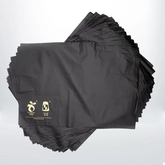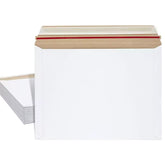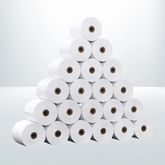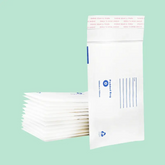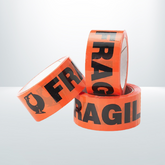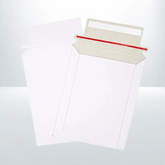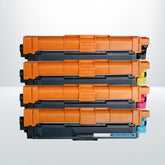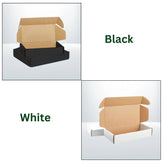Is Bubble Wrap Recyclable? A Comprehensive Guide
Bubble wrap has been a staple in packaging for over 60 years, providing cushioning and protection for fragile items during shipping and storage. However, with increasing awareness of environmental issues, many people are wondering: can bubble wrap be recycled? Let's dive into this topic and explore the facts, challenges, and solutions surrounding bubble wrap recycling.
Based on research, here are some relevant statistics related to bubble wrap recycling and plastic packaging recycling in general:
- Only about 15% of all plastic waste generated over the last 20 years has been recovered through recycling, composting or energy recovery.
- In Australia, just 16% of plastic packaging was recycled or composted in 2019-20, down from 18% in 2018-19.
- According to the EPA, in 2018, 4.2 million tons of plastic bags, sacks and wraps (which includes bubble wrap) were produced in the US, and 3.04 million tons of that ended up in landfills.
- Only 2% of film and flexible packaging materials are recycled annually in the US, according to data from the Recycling Partnership.
- Bubble wrap and other plastic films can take anywhere from 10 to 1,000 years to fully decompose in a landfill.
- The Australian government has set a target of 70% of plastic packaging being recycled or composted by 2025, but the country is still well short of that target.
- These statistics highlight that while bubble wrap and similar plastic packaging materials are technically recyclable, the actual recycling rates are very low. The data suggests there are significant challenges in recycling these materials effectively on a large scale.
What is Bubble Wrap?
Bubble wrap is made from low-density polyethylene (LDPE) film, the same material used for plastic bags and cling film. It's created by heating resin beads until they blend together, forming a plastic sheet. Air is then injected to create the characteristic bubbles, which are sealed with a second layer of plastic film.
The Recyclability of Bubble Wrap
The good news is that bubble wrap is 100% recyclable. However, the recycling process isn't always straightforward and depends on local recycling capabilities. Most curbside recycling programs don't accept bubble wrap because it can get tangled in recycling machinery, causing damage and disruptions.
Recycling Challenges
Several factors contribute to the difficulties in recycling bubble wrap:
- Machinery limitations: Standard recycling facilities are equipped to handle hard plastics, not soft plastics like bubble wrap.
- Contamination: Bubble wrap often comes with labels or tape attached, which need to be removed before recycling.
- Low recycling rates: Only 6% of plastic bags and wrapping (including bubble wrap) are recycled in the UK.
What are the best practices for preparing bubble wrap for recycling
- Here are some best practices for preparing bubble wrap for recycling:
- Remove any tape, labels, or other materials attached to the bubble wrap.
- Make sure the bubble wrap is clean and free from food residue or other contaminants.
- Pop the bubbles to flatten the wrap before recycling.
- Collect bubble wrap along with other soft plastics in a single bag.
- Do not put bubble wrap in your regular curbside recycling bin. It needs to be recycled separately.
- Find a designated drop-off location that accepts soft plastics like bubble wrap. Many grocery stores and retailers have collection bins.
- Store up your bubble wrap and other soft plastics before making a trip to drop them off, to reduce transportation emissions.
- If possible, try to reuse bubble wrap multiple times before recycling it.
- Check your local recycling guidelines, as requirements may vary by location.
- Consider alternatives to bubble wrap when possible, such as paper-based packaging materials.
By following these practices, you can help ensure that bubble wrap is properly prepared for recycling and doesn't contaminate other recyclables or end up in landfills. The key is to keep it clean, remove non-recyclable components, and take it to a designated soft plastics recycling drop-off point.
How to Recycle Bubble Wrap
Despite these challenges, there are ways to recycle bubble wrap responsibly:
- Check local guidelines: Contact your local council or waste management facility to see if they accept bubble wrap for recycling.
- Use supermarket collection points: Many large supermarkets offer in-store soft plastic collection points that accept bubble wrap.
- Look for specialized recycling programs: Some areas have dedicated soft plastic recycling initiatives. For example, Reading Borough Council in the UK is trialing a doorstep collection service for plastic bags and wrapping, including bubble wrap.
- Ensure proper preparation: Before recycling, make sure the bubble wrap is clean, dry, and free from contaminants like tape or labels.
Environmental Impact
The improper disposal of bubble wrap can have significant environmental consequences:
- Over 11 million tonnes of plastic waste end up in our oceans every year, with 46% of that waste being low-density polyethylene film, including bubble wrap.
- Most bubble wrap currently ends up in landfills, where it can take hundreds to thousands of years to decompose.
Alternatives to Bubble Wrap
To reduce the environmental impact of packaging, consider these alternatives:
- Biodegradable options: Some companies offer biodegradable bubble wrap alternatives.
- Paper-based solutions: Honeycomb paper wrap or other types of paper packaging can provide protection without the environmental concerns of plastic.
- Reusable materials: For personal use, consider using clothes, towels, or blankets to wrap fragile items during moves.
- Wool packaging: Some businesses are turning to sustainable materials like wool for protective packaging.
The Future of Bubble Wrap Recycling
Efforts are being made to improve the recyclability of bubble wrap and other soft plastics:
- The European Union is examining data on reusable packaging to consider setting quantitative targets by December 31, 2024.
- Innovations in recycling technology are being developed to handle soft plastics more efficiently.
What Can You Do?
- Reduce usage: Whenever possible, opt for more sustainable packaging options.
- Reuse: Bubble wrap can be used multiple times without impacting its recyclability.
- Repurpose: Get creative! Bubble wrap can be used for insulation, plant protection, or even as a makeshift sleeping mat for camping.
- Recycle responsibly: When you can't reuse or repurpose bubble wrap, make sure to recycle it through appropriate channels.
Conclusion
While bubble wrap is recyclable, the process isn't always straightforward. By understanding the challenges and taking appropriate steps, we can all contribute to reducing plastic waste and promoting a more sustainable future. Remember, the most effective approach is to reduce our reliance on single-use plastics altogether and opt for more eco-friendly alternatives whenever possible.
As consumers and businesses become more environmentally conscious, the packaging industry is evolving. By making informed choices and supporting sustainable practices, we can help drive positive change in how we package and protect our goods while safeguarding our planet.








